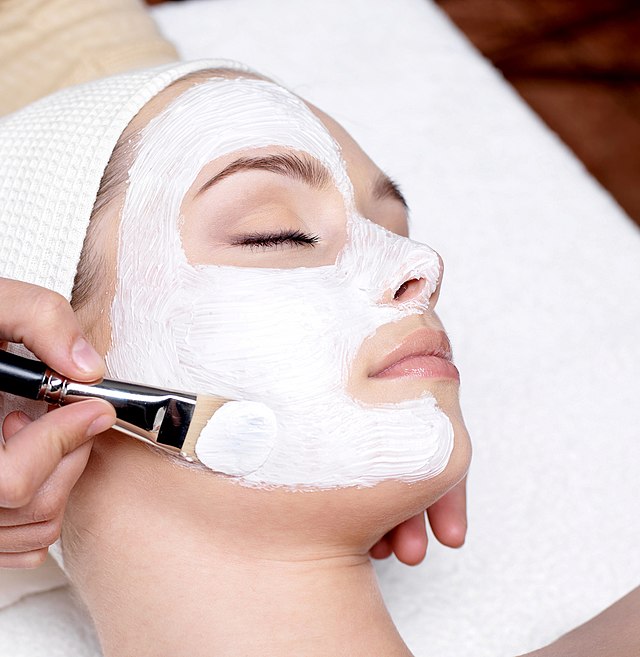
Omcadam/Wikimedia Commons
Disclaimer: This piece is intended to be purely satirical, and is not genuine criticism of Emory’s water quality. Please take this writing with a grain of salt!
Dear freshmen,
Considering our $74,000 tuition, you may be surprised to know that Emory cannot properly supply students with a basic need: water. Sam Goldstone (25C) shared fond memories of the subpar water pressure in Turman Hall last year. “$75K a year for this drip? What is this? Make it spray!” But, you may be even more surprised to see how poorly your skin adjusts to the Atlanta waters.
There are few published studies about university water quality, but there is a reason Brita filters are at the top of many students’ back-to-college lists. 40% of Emory’s campus water needs is supplied by the WaterHub –– a water system that cleans wastewater and recycles it “for future non-potable uses like flushing toilets.” It reduces the amount of water Emory draws from the Atlanta-designated watershed, the Chattahoochee River, by nearly 146 gallons annually.
Unsatisfactory water quality is not a foreign subject among college students nationwide. College Reddit forums, including Michigan State University, University of California Santa Cruz (Ca.), and University of California Los Angeles (Ca.), have prospective and current students wondering if their water is safe, questioning why their water has odd colors and asking if other students have felt sick from ingesting large amounts of unfiltered tap water. The Howard University protests last year may even ring a bell; students protested subpar living conditions with bad water quality being among their grievances. While Emory’s water quality has yet to make headlines, many students have shared how adjusting to the University’s water has affected their bodies.
“I’m from Florida, and the Emory water made my eczema bad and also gave me rashes,” said Sydney Clark (25C). She added that the rashes spread to multiple places on her body and suspected Emory water to be “the culprit” after deducing her rashes had to be caused by something in contact with her skin daily.
Emory’s drinking water has also been called into question, with students noticing how most of their dorm refill machines frequently had a red light. A red light on an Elkay ezH2O Bottle Filling Station indicates that the filter has reached 100% of its life or has been in use for 12 months – Emory staff should be more attentive to these light indicators.
Some students have taken proactive measures, such as 22-year-old Aya Narreis, a Resident Advisor at Kentucky State University, who posted a TikTok showing her installation of a water filtration showerhead in her hall’s communal bathrooms. While this article will not be a step-by-step guide on filtration showerhead installation, you can use it as advice for when the bumps inevitably begin to form on your skin 2-3 weeks into the semester. Because I was in the same position last year.
As a winner of the genetic lottery, I did not struggle with acne in high school, so I was surprised to see my skin turn on me the minute I stepped foot on campus. I also do not have sensitive skin, my skin is not easily irritated, so this puzzled me further. I have lived in Georgia for a large part of my life, so I deduced that my skin is acclimating to the Emory water system — not Georgia’s. As an unofficial (unlicensed) esthetician and an un-dermatologist, I am here to provide unsolicited advice related to what aided my skin in its transition.
Step 1. Do not complain about your skin feeling like Braille if you don’t double cleanse.
Double cleansing is a two-step process: using an oil-based cleanser to remove impurities such as dirt, sebum, makeup and SPF from your face. The oil-based cleanser is then followed by applying a water-based cleanser that would give your skin a clean base to apply the rest of your skincare regimen. I suggest the Juno Skin Cleanser Balm; I have purchased it twice already!
Step 2. Put the Paula’s Choice 2% BHA Liquid Salicylic Acid Exfoliant DOWN
While the bottle claims you can use the product one to two times a day, over-exfoliation can leave your skin bumpy, sensitive and drier than the “chicken” at the Dobbs Common Table. Once or twice a week will do the trick, but listen to your skin. If your skin tells you to only exfoliate once a week, do it. If your skin tells you to wash your face with bottled water like I did last year, do it. Individuals with more sensitive skin may only be able to endure chemical exfoliation once a week, whereas people with more resilient skin can do so up to three times.
Step 3. Focus on your hydration barrier!
I know the water here is not the most hydrating, safe, clean or safe to ingest — but hear me out. The standard American approach to curing acne prioritizes drying out pimples instead of hydrating the skin. While this approach can work to reduce pustule acne, if it is not followed by hydration, your skin may be worse off than before. Invest in a moisturizer that works well with your skin. It’s okay to experiment! My personal favorite is the CeraVe PM Moisturizer; I use it all times of day while reapplying SPF.
Step 4. Use SPF or else
As a Bible Belt resident, I sincerely encourage you to wear SPF to protect your skin from ultraviolet damage and also to protect your skin against hyperpigmentation. Sunbathing on the quad is cute, but stage four melanoma isn’t unless you want to twin with Dooley.
Bondi Sands has an excellent sunscreen for $6.99, but if you don’t have Amazon Prime, you can take a long stroll to our local CVS and purchase the Neutrogena HydroBoost Water Gel Sunscreen Lotion for twice the price at $12.49, which is approximately 0.017% of our very cheap tuition!
Step 5. Make sure everything you put on your face is clean!
Various sources cite that having clean pillowcases can reduce acne significantly. Managing laundry and studying can be difficult, but it is rewarding. Remember to routinely clean everything you put near your face: makeup brushes, pillow cases and tissues from that time, you got a 37% on your chemistry midterm.
Step 6. Keep your regimen simple!
Your skincare should always have three to four steps: cleanse, treat, moisturize and SPF during the day.
Don’t become too enamored with Shay Mitchell’s fifty-eleven-step beauty routine –– which for some reason includes boob masks –– and think you need the same approach. There is beauty in simplicity, and your skin will thank you for it. You can overcome the unfavorable water pressure and acne-inducing liquids falling out of those faucets.
I genuinely thought I had delayed puberty as karma last year, but I was glad to learn about the effects of change in the environment. For some students, the water may not be the problem affecting their skin; it could be the new stressors in college, notes Dayra Morocho-Padilla (25C). Whether your skin-attacking culprit is Emory’s water quality or stress, taking care of your skin is the first step in restoring its original state or improving its current one. Good luck, Eagles, and once again, I am an unlicensed person providing skincare advice.
Kayla Robinson (25C) is from Charlotte Amalie, St. Thomas, USVI.
Kayla Robinson (25C)(she/her) is from Charlotte Amalie, St. Thomas, USVI majoring in Neuroscience and Behavioral Biology. She is also a contributing writer for the Emory Undergraduate Medical Review and enjoys graphic designing in her free time.




